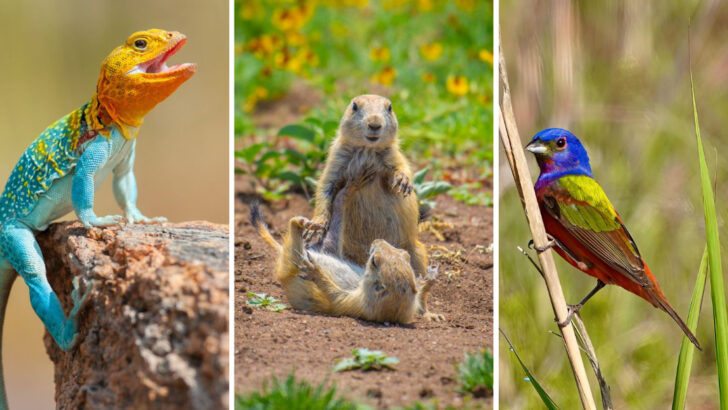Oklahoma isn’t just about wide-open skies and red dirt roads—it’s a living, breathing showcase of some of the most incredible wildlife in America.
From the silent stalk of a bobcat to the soaring majesty of a bald eagle, this state is teeming with creatures that demand attention. Some blend into the rolling plains, while others make their presence known with a chilling howl or a flash of unexpected color.
These animals aren’t just part of the scenery; they shape the land, keeping ecosystems in check and reminding us that wild beauty isn’t limited to national parks. Whether you’re lucky enough to spot one in the wild or just want to know what’s out there, these 26 species are Oklahoma’s living treasures.
Ready to meet the wildest residents of the Sooner State? Let’s take a closer look.
American Bison
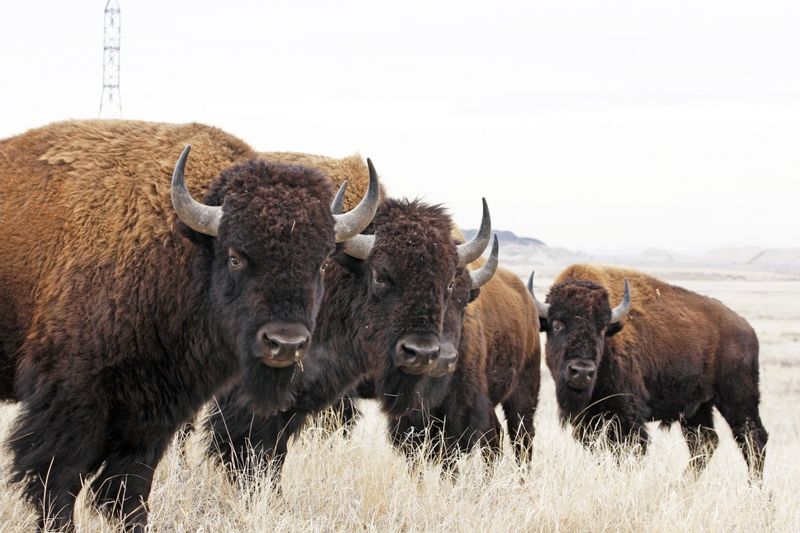
The American Bison, often called the buffalo, symbolizes strength and resilience. These majestic creatures roam the vast Oklahoma prairies, their massive bodies and distinctive humps silhouetted against open skies. Bison herds are a sight to behold, moving together in unity. Their presence was once vital to Native American tribes, providing sustenance and materials for tools and clothing. The bison’s ability to forage on sparse grasses showcases their adaptability. Conservation efforts have helped increase their numbers, making bison a success story in wildlife preservation. Witnessing a bison in its natural habitat is an unforgettable experience.
Eastern Collared Lizard

The Eastern Collared Lizard, with its striking green and orange hues, is a vibrant resident of Oklahoma’s rocky landscapes. Known for their agility, these lizards can sprint on two legs, a fascinating sight for onlookers. Their collars, dark bands around their necks, give them their name. Preferring arid and rocky environments, they bask in the sun, regulating their body temperature. During mating season, males display brighter colors to attract females. Their diet mainly consists of insects, making them crucial for controlling pest populations. Protecting their habitat ensures these colorful lizards continue to thrive.
Great Horned Owl
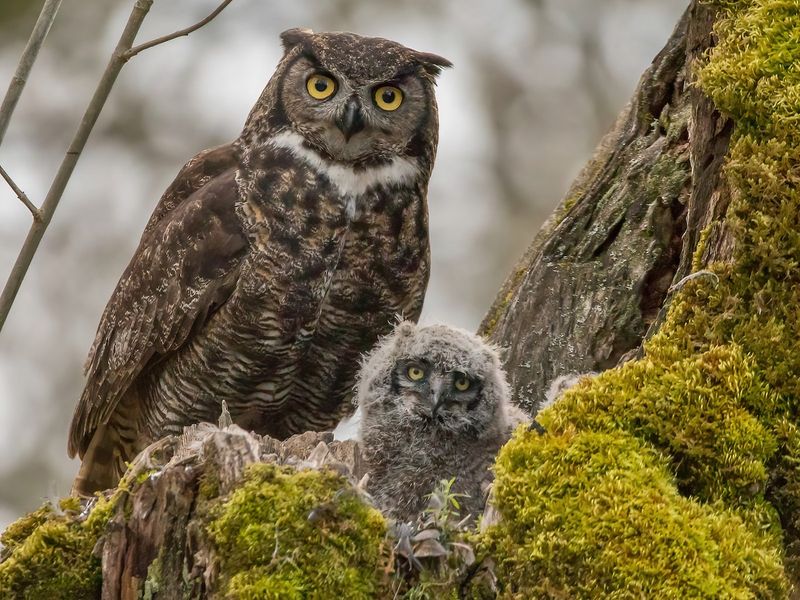
The Great Horned Owl, with its penetrating yellow eyes and tufted ears, exudes an aura of mystery. As a top predator, it commands the night, hunting with silent precision. Found in diverse habitats across Oklahoma, from forests to grasslands, these owls are adaptable hunters. Their diet ranges from small mammals to birds, and even reptiles. Known for their distinctive hooting calls, they play a crucial role in controlling rodent populations. Observing a Great Horned Owl in the wild, as it soars silently through the night, is truly mesmerizing. They embody the wild, untamed beauty of Oklahoma.
Monarch Butterfly
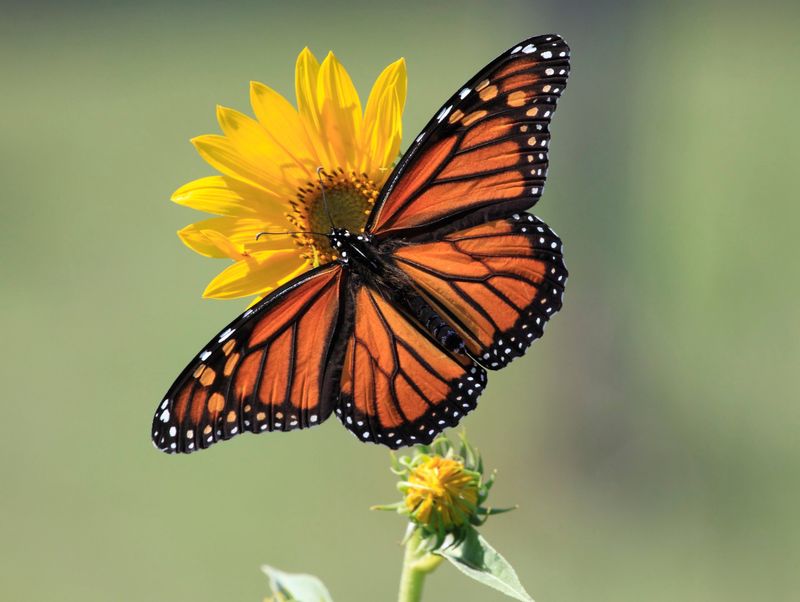
The Monarch Butterfly, with its iconic orange and black wings, is a symbol of transformation and migration. These butterflies are known for their incredible journey from North America to central Mexico, covering thousands of miles. Oklahoma’s meadows provide critical pit stops where monarchs refuel on nectar. Their lifecycle, from caterpillar to chrysalis to butterfly, is a captivating metamorphosis. As pollinators, they play an essential role in maintaining ecological balance. Conservation efforts focus on protecting milkweed, their primary host plant. Witnessing a monarch’s migration, fluttering through the Oklahoma skies, is a reminder of nature’s wonders.
Prairie Dog

Prairie Dogs, with their curious expressions and busy social structures, are quintessential inhabitants of Oklahoma’s grasslands. These small rodents live in complex burrow systems, known as towns, where they communicate through an intricate array of barks. Their presence benefits the ecosystem, aerating the soil and providing habitats for other species. Prairie dogs primarily feed on grasses and seeds, playing a role in plant dispersion. Conservation of these grasslands ensures the survival of prairie dogs and the many species that rely on their colonies. Watching a prairie dog pop out of its burrow is a charming spectacle.
American Alligator
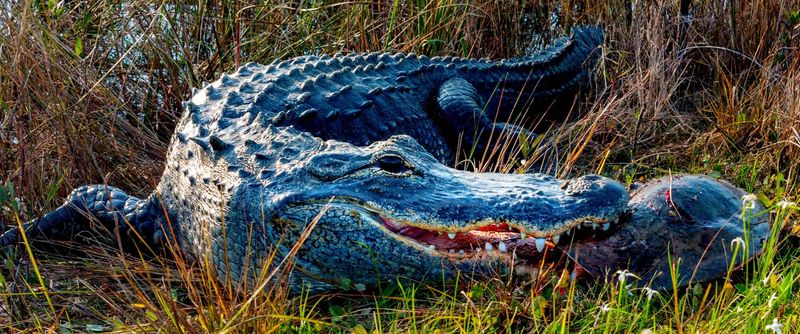
The American Alligator, a formidable predator in southeastern Oklahoma’s wetlands, commands respect with its powerful presence. These ancient reptiles, with their armored bodies and strong jaws, lie in wait, largely submerged, for unwary prey. Alligators play a crucial role in their ecosystem, controlling fish and amphibian populations. During the breeding season, females build nests for their eggs, fiercely guarding them from intruders. Conservation has allowed alligator populations to recover after historical declines. Observing an alligator in the wild, its eyes just above the water’s surface, is both thrilling and a testament to nature’s resilience.
Scissor-tailed Flycatcher
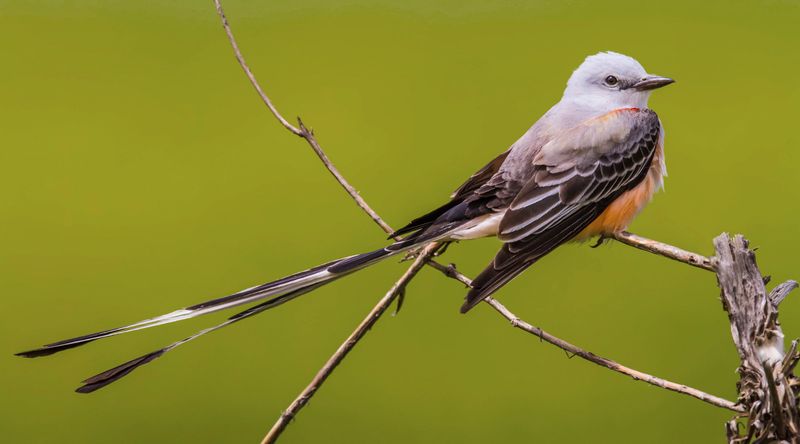
The Scissor-tailed Flycatcher, Oklahoma’s state bird, is a graceful sight in the wide-open skies. Known for its distinctive forked tail, which resembles scissors, this bird performs acrobatic feats while hunting for insects. Commonly seen perched on fences and power lines, they thrive in open country and farmlands. During breeding season, their aerial displays are a marvel, as males court females with impressive dives. Their migratory patterns take them to Central America during winter, returning to Oklahoma in spring. Protecting their habitat ensures these elegant birds continue to grace the skies, symbolizing Oklahoma’s natural beauty.
River Otter

The River Otter, a playful and agile aquatic mammal, brings joy to Oklahoma’s waterways. Known for their sleek bodies and webbed feet, otters are adept swimmers, often seen frolicking in rivers and lakes. Their diet consists mainly of fish, but they are opportunistic feeders. Otters maintain healthy ecosystems by controlling fish populations and contributing to the aquatic food chain. Social creatures, they often play together, communicating with whistles and chirps. Conservation efforts focus on preserving clean waterways, vital for their survival. Spotting a river otter in the wild, diving gracefully, is a joyful experience.
Red Fox
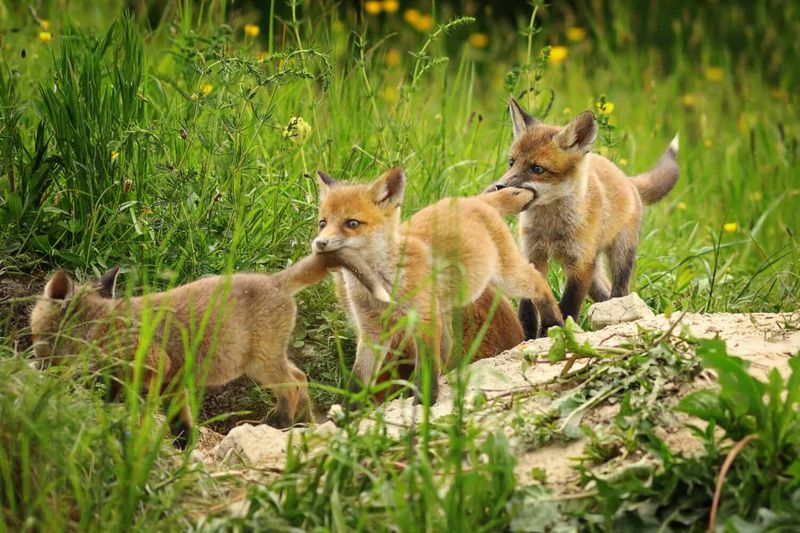
The Red Fox, with its striking red fur and bushy tail, is a master of adaptability. Found throughout Oklahoma, they thrive in diverse habitats, from forests to urban areas. Foxes are solitary hunters, known for their cunning and resourcefulness. Their diet includes small mammals, birds, and fruits, showcasing their omnivorous nature. During winter, their dense fur provides warmth against the cold. Red foxes are known for their playful behavior, especially pups learning valuable survival skills. Protecting their habitats ensures these clever creatures continue to thrive. Observing a red fox in its natural environment is a delightful encounter.
Bald Eagle
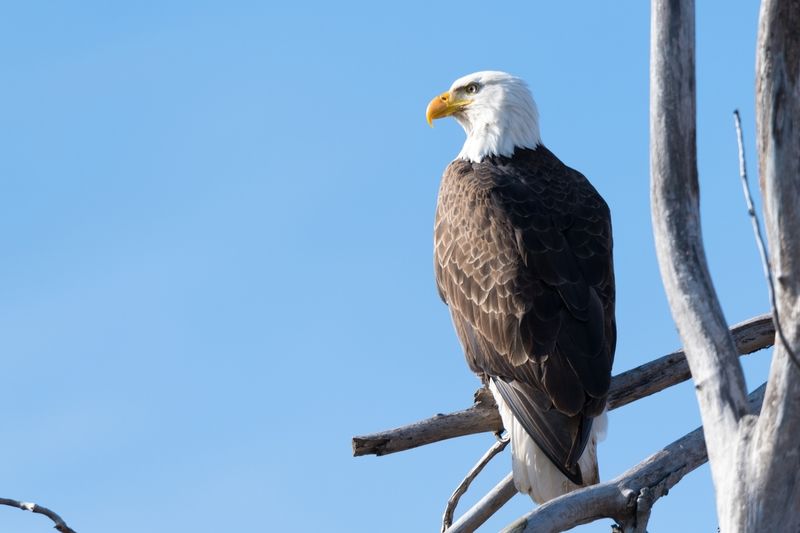
The Bald Eagle, a symbol of strength and freedom, graces the skies of Oklahoma with its majestic presence. Recognizable by its white head and tail, this raptor is a powerful hunter, preying on fish and small mammals. Eagles build large nests near water bodies, returning annually to raise their young. Conservation efforts have successfully increased their numbers, a testament to wildlife protection efforts. Observing a bald eagle soaring effortlessly, its keen eyes scanning the landscape, is an awe-inspiring sight. These magnificent birds embody the wild spirit of Oklahoma, reminding us of nature’s grandeur and resilience.
Nine-banded Armadillo
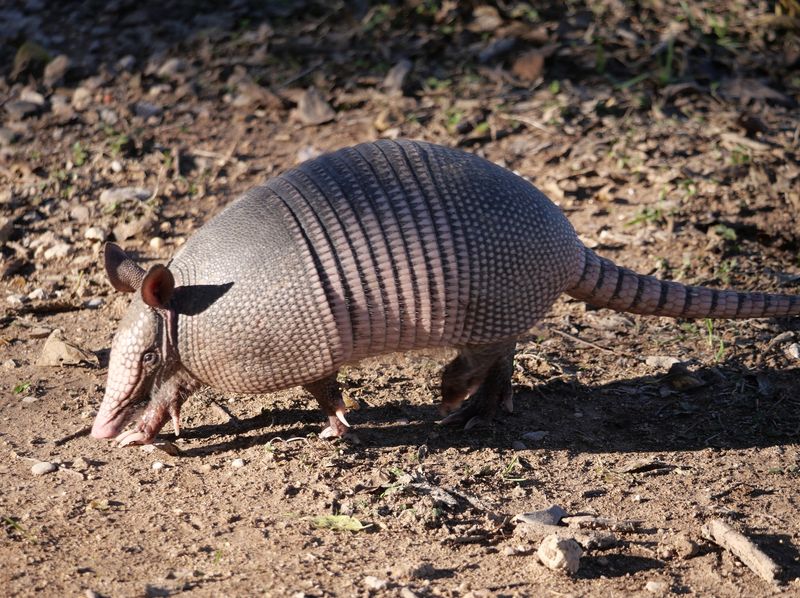
The Nine-banded Armadillo, with its unique armored shell, is a fascinating resident of Oklahoma. Known for their burrowing habits, armadillos dig for insects and grubs, using their strong claws. Their nocturnal lifestyle allows them to avoid predators while searching for food. Armadillos are solitary creatures, coming together only for mating. Their armor provides protection, but they rely on quick reflexes to avoid threats. Despite their tough exterior, armadillos are vulnerable to habitat loss. Conserving their environment is vital for their survival. Encountering an armadillo, with its comical gait, is a charming reminder of nature’s diversity.
Rattlesnake
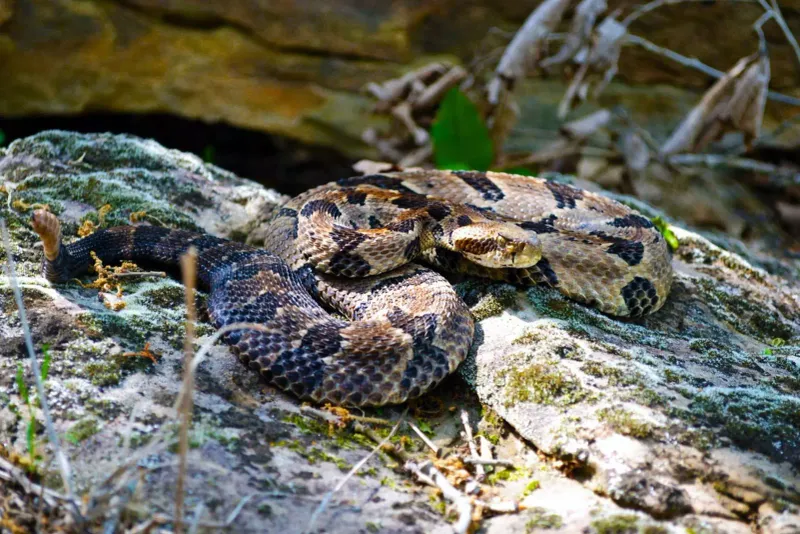
Rattlesnakes, with their iconic rattles, are both feared and respected in Oklahoma’s diverse landscapes. These venomous snakes play a vital role as both predator and prey, maintaining the ecological balance. Their distinctive rattle warns of their presence, a natural defense mechanism to avoid conflict. Rattlesnakes hunt small mammals and birds, using heat-sensing pits to locate prey. During winter, they hibernate in communal dens, emerging in warmer months. Their camouflage allows them to blend seamlessly into their surroundings. Understanding and respecting rattlesnakes’ role in the ecosystem is crucial. Observing them from a safe distance reveals their beauty and purpose.
Painted Bunting
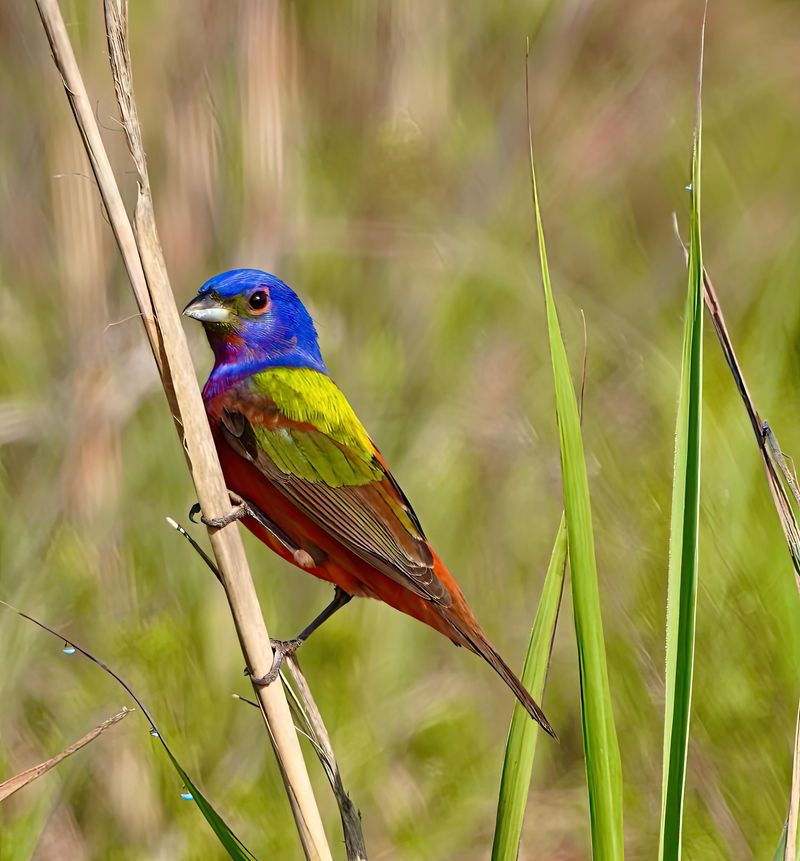
The Painted Bunting, often described as a living rainbow, is one of Oklahoma’s most colorful songbirds. Males boast vibrant blue, green, and red feathers, making them a sought-after sight for birdwatchers. These buntings prefer dense shrubs and thickets, where they forage for seeds and insects. Their melodic songs fill the air during mating season, as males serenade potential mates. Painted buntings migrate to Central America for winter, returning each spring. Habitat preservation is essential for their survival, as urbanization threatens their breeding grounds. Spotting a painted bunting, with its dazzling colors, is a breathtaking experience.
Wild Turkey

Wild Turkeys, with their impressive size and striking plumage, roam Oklahoma’s fields and forests. Known for their keen eyesight and acute hearing, turkeys are vigilant and elusive. Toms, or male turkeys, display vivid colors and fan their tail feathers during courtship. These social birds form flocks, foraging for seeds, insects, and small reptiles. Their presence benefits the ecosystem, aiding in seed dispersal and maintaining healthy ground cover. Conservation efforts focus on preserving their habitats, ensuring turkey populations remain robust. Observing a wild turkey strutting confidently through its natural environment is a testament to Oklahoma’s rich wildlife.
Bobwhite Quail
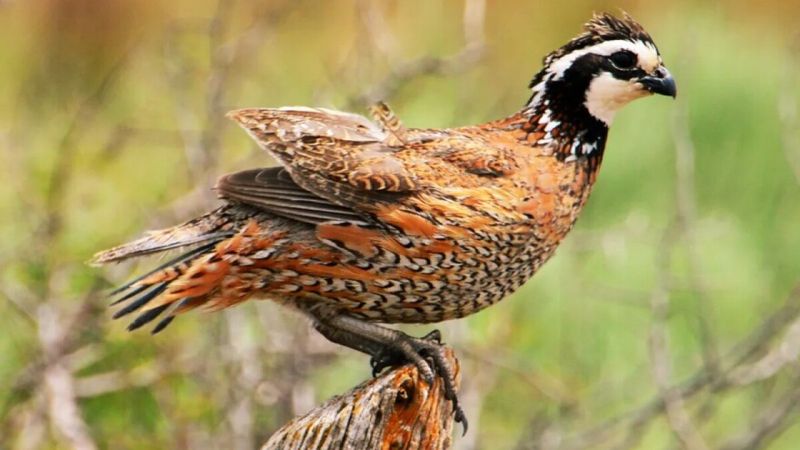
The Bobwhite Quail, with its distinctive call echoing across Oklahoma’s grasslands, is a beloved game bird and a symbol of the state’s rural heritage. These small, plump birds prefer open, grassy areas where they forage for seeds and insects. Quails form coveys, or groups, for protection and social interaction. Their camouflage plumage allows them to blend seamlessly into their surroundings, evading predators. Habitat loss poses a threat to their populations, making conservation efforts vital. The quail’s presence reflects the health of the grassland ecosystems. Hearing a bobwhite’s call in the wild evokes a sense of nostalgia and connection to nature.
American Black Bear
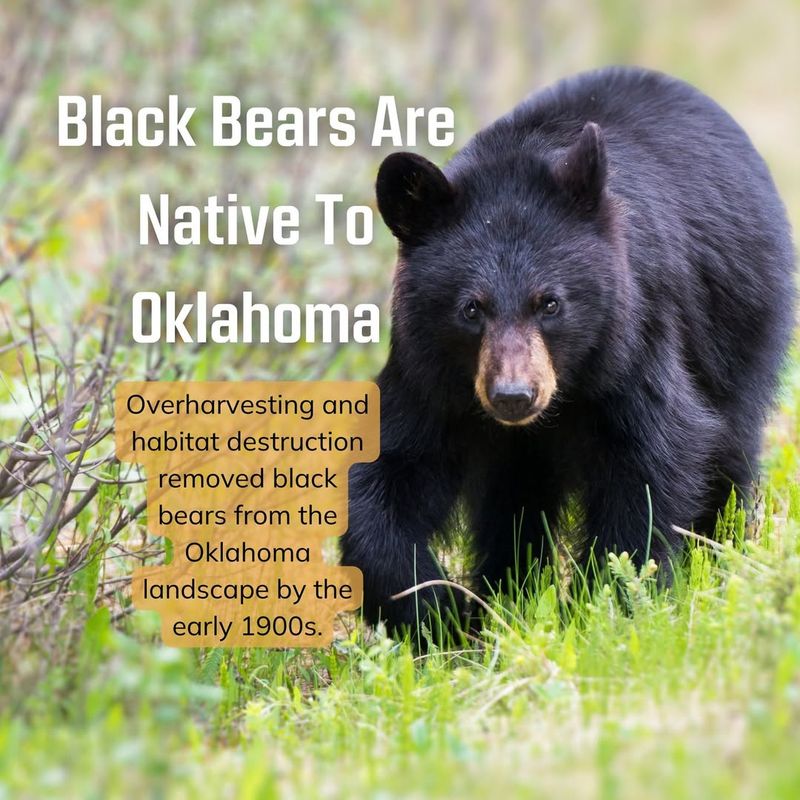
The American Black Bear, with its striking appearance and impressive size, inhabits the forests of eastern Oklahoma. These bears are opportunistic feeders, consuming berries, nuts, insects, and small mammals. Their keen sense of smell guides them to food sources, including human campsites. Black bears are solitary creatures, with mothers fiercely protective of their cubs. During winter, they enter a state of torpor, conserving energy until spring’s arrival. Habitat preservation is crucial for their continued survival, as human encroachment threatens their environment. Observing a black bear in the wild, with its powerful yet gentle presence, is humbling.
White-tailed Deer
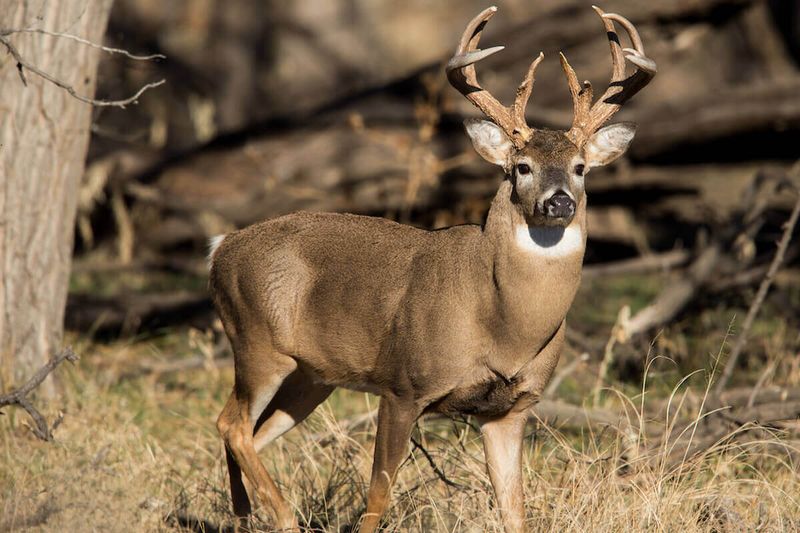
The White-tailed Deer, with its graceful movements and distinctive white tail, is a familiar sight in Oklahoma’s woodlands and meadows. These herbivores feed on leaves, twigs, and fruits, playing a role in plant dispersion. Deer are crepuscular, most active during dawn and dusk. Their acute senses of smell and hearing help them evade predators. During mating season, males, known as bucks, grow antlers, which are used in displays of dominance. Conservation efforts aim to balance deer populations, ensuring sustainable ecosystems. Watching a white-tailed deer, with its gentle demeanor, offers a peaceful glimpse into Oklahoma’s natural world.
Elk
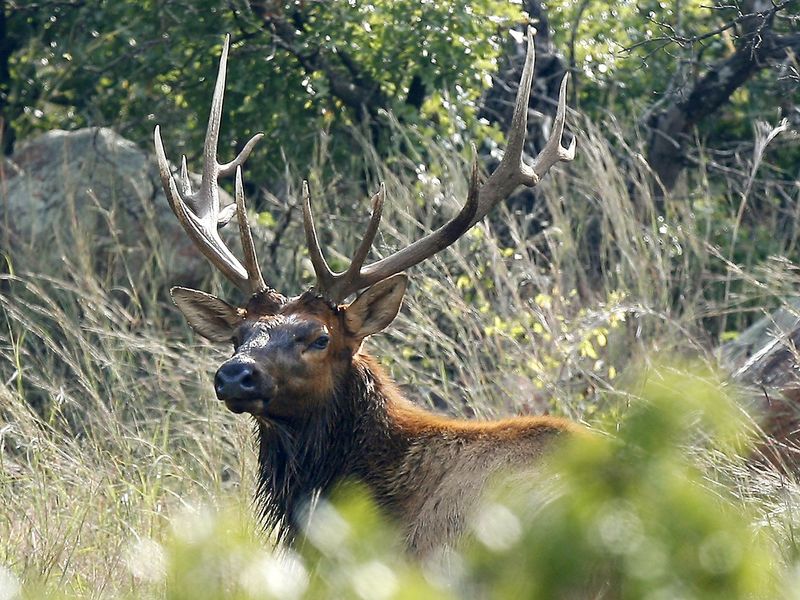
Elk, with their impressive antlers and majestic presence, roam freely in Oklahoma’s prairies and forests. These large herbivores are social animals, forming herds that move together in search of food and water. During the rut, males bugle to assert dominance and attract females. Elk play a significant role in shaping their ecosystem by grazing on grasses and shrubs. Conservation efforts focus on maintaining healthy populations and reducing human-wildlife conflicts. Observing an elk in its natural habitat, with its regal stance and impressive antlers, is a breathtaking experience. Their presence embodies the wild spirit of Oklahoma’s landscapes.
Black-tailed Jackrabbit

The Black-tailed Jackrabbit, with its long ears and powerful hind legs, is a swift and agile resident of Oklahoma’s open landscapes. These hares are primarily nocturnal, foraging for grasses and shrubs under the cover of darkness. Their large ears help regulate body temperature and detect predators. Jackrabbits rely on their speed and agility to escape threats, zigzagging across the terrain. Their presence supports predators like hawks and coyotes, maintaining the ecological balance. Understanding their role in the ecosystem is essential for conservation. Spotting a jackrabbit darting through the landscape, ears perked, is a testament to nature’s adaptability.
Coyote

The Coyote, a symbol of adaptability and cunning, is a common sight across Oklahoma’s diverse habitats. These intelligent canines thrive in various environments, from rural areas to urban settings. Coyotes are omnivorous, feeding on small mammals, fruits, and even human waste when necessary. Their social structure revolves around family units, with parents teaching pups survival skills. Coyotes play an essential role as apex predators, controlling rodent populations. Understanding and respecting their place in the ecosystem is vital. Observing a coyote in its natural environment, with its watchful eyes and agile movements, is a reminder of nature’s resilience.
Peregrine Falcon

The Peregrine Falcon, renowned for its breathtaking speed, is one of Oklahoma’s most formidable aerial predators. These falcons are adept hunters, diving at incredible speeds to capture prey mid-air. Found in diverse habitats, from cliffs to urban skyscrapers, they adapt well to changing environments. Their keen eyesight allows them to spot prey from great distances. Conservation efforts have helped recover their populations after declines due to pesticide use. Watching a peregrine falcon in flight, darting through the sky with precision, is an awe-inspiring experience. They symbolize the untamed power and grace of Oklahoma’s natural world.
Eastern Bluebird
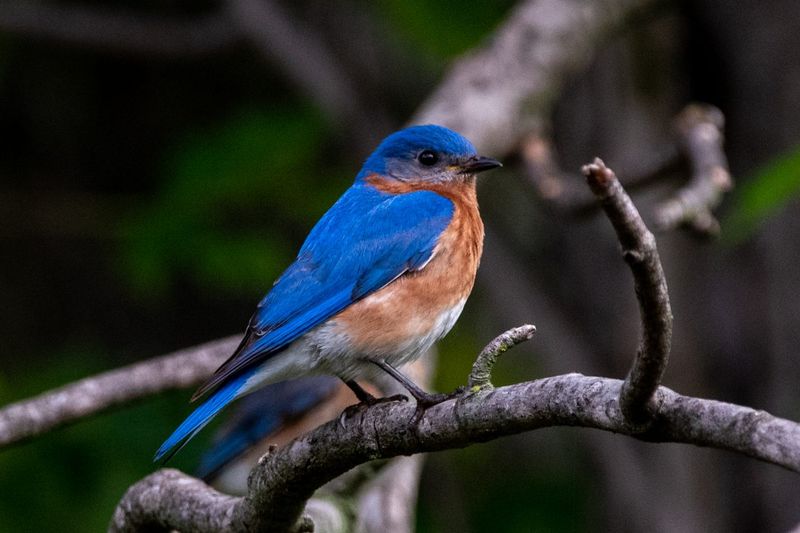
The Eastern Bluebird, with its vibrant blue and orange plumage, adds a splash of color to Oklahoma’s rural landscapes. These small songbirds prefer open woodlands and farmlands, where they nest in tree cavities and nest boxes. Bluebirds are insectivorous, feeding on beetles, caterpillars, and berries. Their melodic songs fill the air during breeding season, a delightful addition to the countryside’s auditory landscape. Conservation efforts focus on providing nesting sites and preserving open habitats. Spotting an eastern bluebird, flitting from post to post, is a joyful reminder of nature’s beauty and the importance of habitat protection.
Great Blue Heron

The Great Blue Heron, with its majestic stature and graceful movements, is a prominent figure in Oklahoma’s wetlands. These wading birds are expert fishers, using their long necks and sharp beaks to catch prey. Herons are solitary hunters, often standing motionless before striking with lightning speed. Their presence indicates a healthy aquatic ecosystem, as they rely on abundant fish and clean water. During breeding season, they form colonies, building large nests in trees. Conservation efforts focus on preserving wetland habitats, crucial for their survival. Observing a great blue heron in action, with its poised elegance, is a testament to nature’s artistry.
Eastern Red Bat
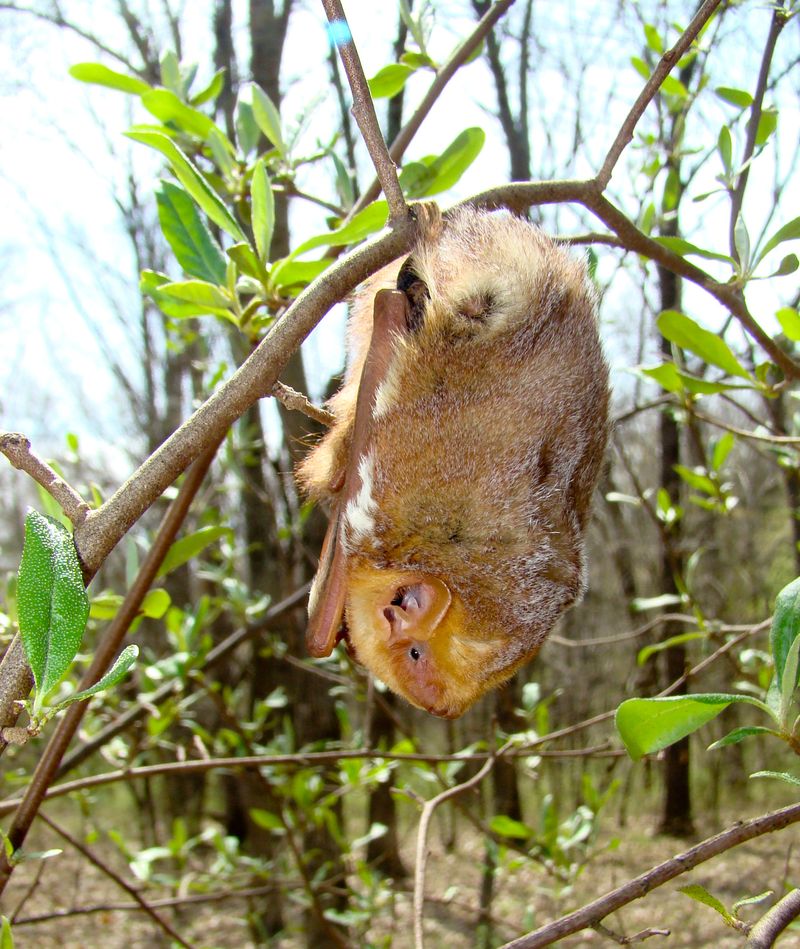
The Eastern Red Bat, with its distinctive reddish fur, is a remarkable resident of Oklahoma’s forests. These solitary bats roost in trees, camouflaged among leaves, and emerge at dusk to feed on insects. Their agile flight and echolocation skills allow them to hunt efficiently, contributing to pest control. Red bats migrate southward for winter, returning in spring to breed. Protecting their habitats and food sources is essential for their survival. Observing an eastern red bat flit through the twilight sky, silhouetted against the fading light, is a graceful and serene experience. They embody the hidden wonders of Oklahoma’s nocturnal world.
Lesser Prairie Chicken
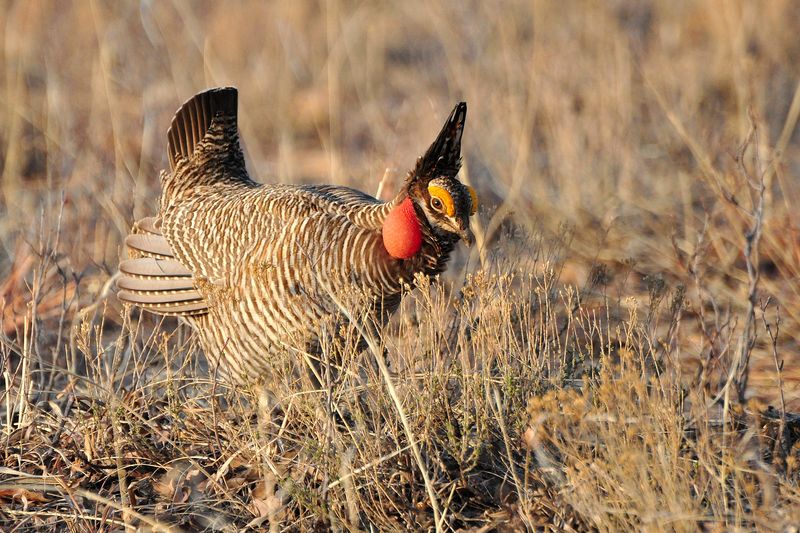
The lesser prairie chicken is a true spectacle on Oklahoma’s prairies. Known for its elaborate mating dance, this medium-sized grouse inflates colorful air sacs and displays its feathers to attract mates. Found in grasslands, these birds are an indicator of healthy prairie ecosystems.
The male’s booming calls and vibrant display can be witnessed during the breeding season, drawing nature enthusiasts from far and wide. Conserving their habitat is crucial, as their population has dwindled due to habitat loss. Observing these birds offers a glimpse into the rich tapestry of life thriving in Oklahoma’s grasslands.
Oklahoma Cave Crayfish
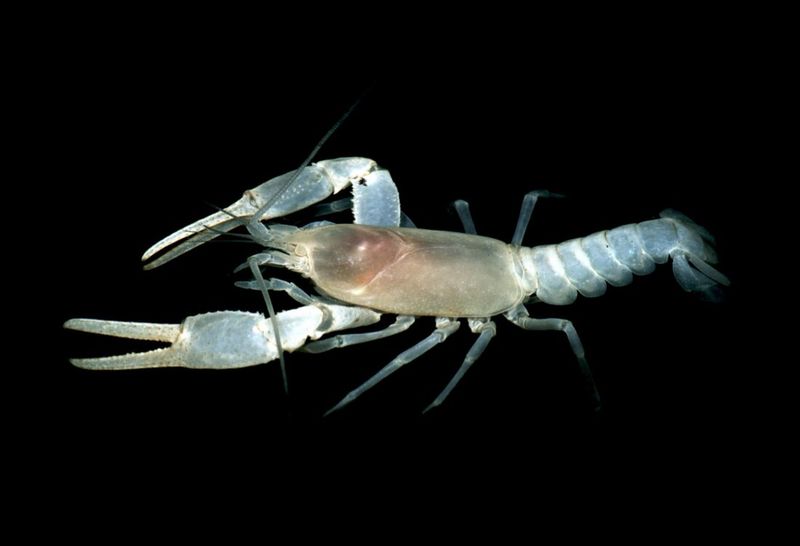
Hidden in Oklahoma’s underground caves, the Oklahoma cave crayfish is a rare, sightless creature adapted to its dark environment. With a translucent body, it relies on touch and chemical cues to navigate and find food.
This crayfish is an essential part of the cave ecosystem, playing a role in nutrient cycling. Its presence indicates a pristine subterranean habitat. Protecting these hidden ecosystems ensures the survival of the cave crayfish, as well as other specialized species.
Exploring these caves requires care to minimize disturbances, preserving these unique and fragile habitats for future generations.

